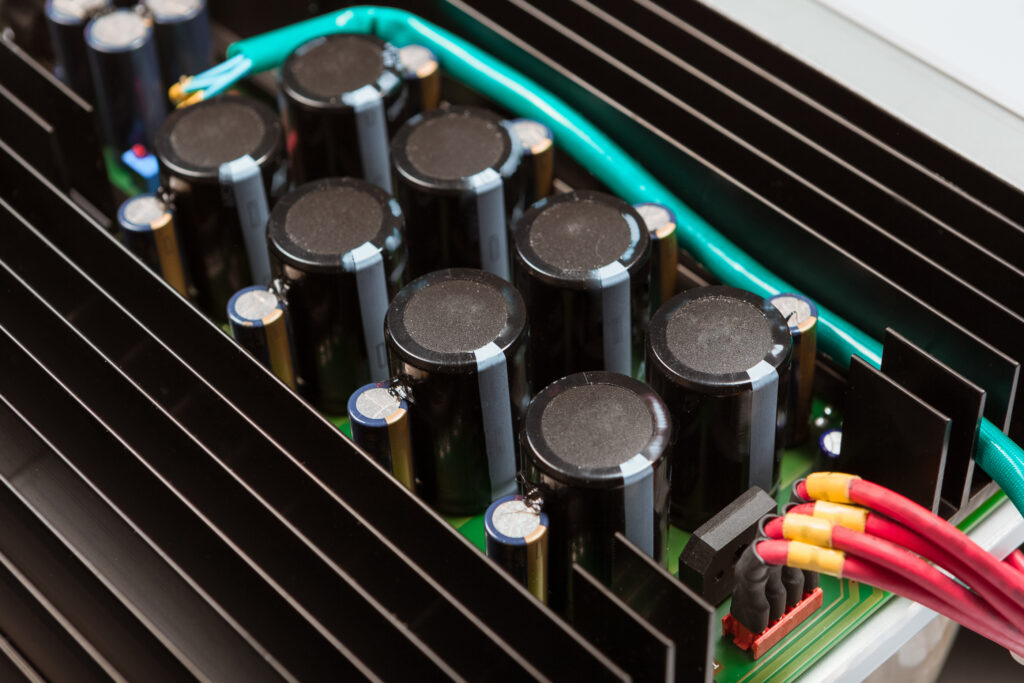Capacitors
Capacitors: Types, Theories, and Evolution Over Time
Capacitors are fundamental electronic components that store and release electrical energy, playing a crucial role in various electronic systems. Over time, capacitors have undergone significant advancements in design, materials, and applications. This article explores the different types of capacitors, their use theories, and how they have evolved to meet the changing demands of modern technology.
Types of Capacitors
a) Ceramic Capacitors: Ceramic capacitors are compact and inexpensive, making them widely used in electronics. They are constructed using ceramic materials and offer a wide range of capacitance values. Ceramic capacitors are suitable for filtering, decoupling, timing, and coupling applications.
b) Electrolytic Capacitors: Electrolytic capacitors have high capacitance values and are commonly used in power supply applications. They are available in two types: aluminum electrolytic capacitors and tantalum electrolytic capacitors. Electrolytic capacitors offer high capacitance density but are polarized, requiring correct polarity during installation.
c) Film Capacitors: Film capacitors use a thin plastic film as the dielectric material. They offer good stability, low leakage, and high voltage ratings. Film capacitors are available in various types, including polyester (Mylar), polypropylene, and polycarbonate capacitors. They find applications in power electronics, audio equipment, and signal processing circuits.
d) Tantalum Capacitors: Tantalum capacitors are known for their high capacitance density and stable performance. They are commonly used in portable electronics, telecommunications, and medical devices. Tantalum capacitors offer excellent frequency response and low equivalent series resistance (ESR).
e) Electrostatic Capacitors: Electrostatic capacitors, commonly known as supercapacitors or ultracapacitors, provide high energy storage and rapid charge/discharge capabilities. They are used in applications requiring short-term energy bursts, such as hybrid vehicles, renewable energy systems, and backup power supplies.
Capacitor Use Theories
a) Energy Storage: Capacitors store electrical energy in an electric field between two conductive plates separated by a dielectric material. They can quickly charge and discharge, making them suitable for applications requiring short-term energy storage and rapid energy release.
b) Filtering and Decoupling: Capacitors are used to filter out high-frequency noise and stabilize power supplies. They act as low-impedance paths for high-frequency signals, reducing voltage fluctuations and ensuring a stable supply of power to sensitive components.
c) Timing and Oscillation: Capacitors, in combination with resistors and inductors, form timing circuits and oscillators. They control the timing of events, such as in timing circuits for electronic devices, or generate oscillations, as in RC (resistor-capacitor) oscillators.
d) Coupling and Signal Transmission: Capacitors can be used to couple or link different stages of a circuit, allowing the AC (alternating current) signal to pass while blocking the DC (direct current) component. This enables the transmission of AC signals while blocking any DC bias.
Evolution of Capacitors
Capacitors have evolved significantly over time to meet the demands of advancing technology:
- Miniaturization: Capacitors have become smaller in size, allowing for higher component density and miniaturization of electronic devices.
- Increased Capacitance and Voltage Ratings: Capacitors now offer higher capacitance values and voltage ratings, allowing for greater energy storage and handling of higher voltage levels.
- Improved Dielectric Materials: Advances in dielectric materials have led to improved performance, stability, and reliability of capacitors.
- New Capacitor Technologies: Emerging technologies, such as solid-state capacitors and hybrid capacitors, offer enhanced performance in terms
Capacitors play a vital role in modern electronics, storing and releasing electrical energy and enabling various functions within electronic systems. Over time, capacitors have undergone significant advancements, evolving in terms of design, materials, and applications.
Today, a wide range of capacitor types are available, including ceramic capacitors, electrolytic capacitors, film capacitors, tantalum capacitors, and electrostatic capacitors. Each type has its unique characteristics, making them suitable for specific applications.
Capacitors serve multiple purposes in electronic circuits, including energy storage, filtering, decoupling, timing, oscillation, coupling, and signal transmission. Understanding the theories behind capacitor usage allows engineers to effectively design circuits and utilize capacitors for optimal performance.
The evolution of capacitors has been driven by the need for smaller sizes, increased capacitance and voltage ratings, improved dielectric materials, and the emergence of new capacitor technologies. These advancements have enabled the development of more compact electronic devices with higher energy storage capabilities, improved performance, and increased reliability.
As technology continues to advance, capacitors will continue to evolve, adapting to the changing demands of electronic systems. From consumer electronics to automotive applications, renewable energy systems to medical devices, capacitors will remain indispensable components in powering and controlling electronic circuits.

